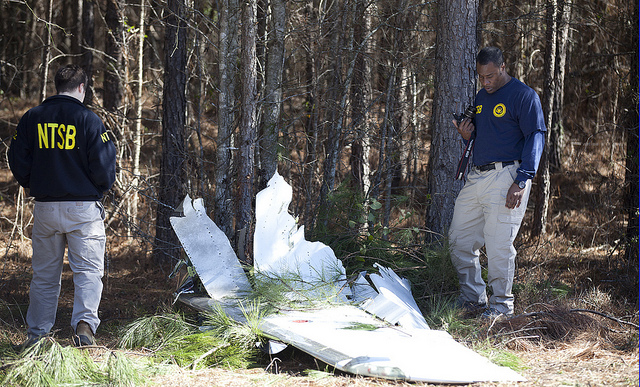A new report suggests that drowsy flying can be as deadly as drowsy driving. The report describes a National Transportation Safety Board investigation of a February 2013 plane crash.
The NTSB final report concludes that a sleepy pilot was flying the business plane. The resulting crash killed all five passengers. The NTSB concluded that “his fatigue due to acute sleep loss” contributed to the tragedy. Another factor was “his ineffective use of time between flights to obtain sleep.”
“Just as pilots should not take off without enough fuel, they should not operate an aircraft without enough rest,” Christopher Hart said in a press release. He is the NTSB Acting Chairman.
The business flight was carrying five people who operated several vein care centers. They were returning home from Nashville to Thomson, Georgia.
The pilot lowered the landing gear on approach to the county airport. Then a system failure message came on. The pilot ignored the warning and began to land the plane. Suddenly he attempted to abort the landing by lifting off near the end of the runway. But the aircraft’s left wing struck a utility pole about 63 feet above the ground. The wing was completely severed. The plane crashed nearby in a wooded area.
The pilot and co-pilot survived. But all five passengers died from multiple traumatic injuries. Their seats had been “forcibly detached from the airplane.”
The investigation revealed that the pilot had slept only five hours the night before the crash. He also had woken up early at 2 a.m. on the day of the flight. The crash occurred about 18 hours later around 8 p.m.
The report concluded “the pilot was likely suffering from fatigue at the time of the accident.” It also noted that fatigue causes attention, memory and performance problems.
The probable cause of the crash was the pilot’s performance errors. He neglected to follow proper procedures after the system failure.
“This pilot’s inadequate knowledge of his aircraft was compounded by his fatigue,” said Hart. “As a result, five people died who did not have to.”
The NTSB reports that 472 people died in aviation accidents in 2010. This represents only one percent of all annual U.S. transportation fatalities. About 94 percent of transportation deaths occur on U.S. roads.
The National Healthy Sleep Awareness Project reports that healthy sleep is critical for both public health and transportation safety. Most adults need seven to nine hours of nightly sleep for optimal alertness.





